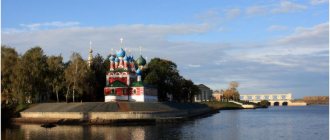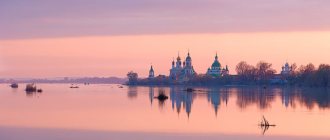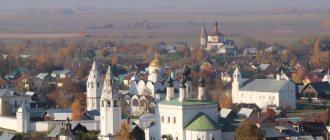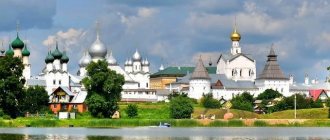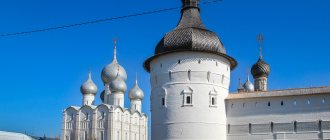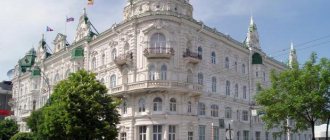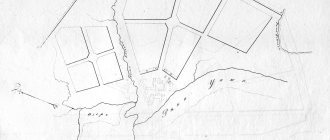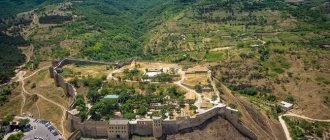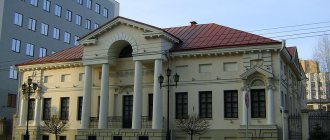Many people, without going into details, often confuse Rostov the Great with Rostov-on-Don. However, this is a completely different city. The second is a modern metropolis. And the first is a small, cozy, original town located not far from Moscow. What makes this city unique? What is it attractive for tourists? What interesting things can you find out about this place?
The mystery of the name
There is no exact information why the city is called Rostov. There is a version that its founder was the leader of the Finnish-Ugric tribe Merya Rosta , after whom the city was named. Some associate the name with a shortened version of the Slavic name Rostislav - Rost. When adding the suffix “-ov”, a word is obtained indicating ownership of the founder. Another version is also associated with the name. It is believed that a certain Prince Ross created a city on this site. Later it began to be called “Rossov Stan” - the settlement of Ross, which gradually transformed into Rostov.
Fertility and mortality
Despite the growth of the population of Rostov-on-Don, the birth/mortality rates in the city and region are gradually deteriorating. According to official data, in 2022 the birth rate in Rostov-on-Don was 14.9 thousand. The figure is 6.3% less than in 2022. Mortality rates remain high – 23.7 thousand. Natural decline amounted to 9.7 thousand. This parameter determines the ratio of the number of births/deaths of people in the city for a certain period.
How the city appeared
Rostov is one of the ancient cultural and historical cities of Russia. The very first mention of it was recorded in 862 in the chronicle . However, based on archaeological excavations, a version was compiled about the first fortification on the shores of Lake Nero . It was called the Sarskoye settlement , which appeared in the 7th century.
Rostov itself was formed no earlier than the 10th century . This difficulty in determining the time intervals for the formation of the city is due to the fact that there are several hypotheses. Some historians say that the city already existed in these places before the Slavs appeared. Others believe that it was included in the Sarsky settlement only in the 10th century. It is noteworthy that both of these settlements existed in parallel and peacefully.
Ethnic composition
Conclusions on the national composition in Rostov-on-Don are made by analyzing the results of the 2010 All-Russian Census. No new data was provided. The majority of the population of the city and region are Russians, the share is 90.1 percent. The next ethnic group is Ukrainians – 1.5 percent. The third place is occupied by Armenians – 3.4 percent.
- On average over the years, 0.6% are Turks and Belarusians.
- The next ethnic group is Tatars – 0.4 percent.
- 0.3% are Azerbaijanis, Chechens, and Gypsies.
- Next - Koreans - make up 0.26 percent of permanent residents. 0.24 percent of the townspeople are Georgians, 0.17 percent are Moldovans.
- An identical proportion of respondents did not indicate their nationality.
- The next national group is Germans, making up 0.16 percent.
- Following them are Dargins and Jews - 0.15%, 0.11%, respectively.
- Avars occupy 0.09 percent.
- 0.08% are occupied by Lezgins, Udmurts, and Mordovians. 0.07 percent of the population are Greeks, Kazakhs, Chuvashs.
- The Maris and Ossetians close the list – 0.06 percent.
The ethnic composition is diverse, there are many peoples of Asia and Europe.
Rostov Kremlin
The main attraction and symbol of the city is the Rostov Kremlin. In fact, it is not a Kremlin, since it is not a fortress at all. Previously, it was the residence of Jonah Sysoevich , Metropolitan of the Rostov diocese. The Kremlin was built at the end of the 17th century. It stands on the shore of Lake Nero. The temple complex includes church, utility and administrative buildings. On the territory there are Cathedral Square, the Bishop's Court and the Metropolitan Garden. The Rostov Kremlin was built to demonstrate the power and strength of spiritual authority.
Forecast
End of 2022 – Rosstat made a statement about the expected decline in the country's population until 2035. According to the average forecast, the number of inhabitants of the Russian Federation will decrease to 142.9 million. An optimistic forecast assumes a slight increase in the total number of residents of the country.
As the population in Rostov-on-Don is growing, it is expected that it will gradually increase thereafter. The majority is due to the influx of migrants from other regions of Russia and neighboring countries.
Assumption Cathedral
The Assumption Cathedral is located on Cathedral Square of the Rostov Kremlin. This building was built long before the construction of the Kremlin itself. The cathedral was built in 991 and was founded in honor of the baptism of the townspeople. It was the main church of the diocese, so the tombs of princes and bishops have been preserved here. For political reasons, the Assumption Cathedral has been closed since 1935. Its activities resumed in 1991. Now the cathedral belongs to the Russian Orthodox Church.
Marriages and divorces
The number of marriages in Rostov-on-Don has decreased compared to previous years. 2022 – according to published data from Rosstat, 26,670 marriages were registered. The figure is 1 percent less than the figure for 2022. The number of marriages compared to 2017 decreased even more - 12%.
On the contrary, the number of divorces is growing. In 2022, 2.2% more marriages were dissolved than in 2022.
It is not possible to obtain reliable statistics for 2022 since marriage/divorce processes have been suspended due to the COVID-19 pandemic. Therefore, it is difficult to predict the number of created/dissolved family unions.
Experts call the main reasons for divorce: loss of feelings between spouses, financial difficulties.
Raspberry ringing
Next to the Assumption Cathedral there is a belfry . Despite the fact that it was built later than the cathedral, its architecture is in the same style. It was built at the end of the 13th century. And then the bells were cast. 15 bells have survived to this day. The largest of them is “Sysoy” . It weighs almost 33 tons . It is followed by the Polyeleos , which weighs about 15 tons . The third largest is the Swan . Its weight is 8 tons. Each giant is controlled by 3-4 bell ringers. Twice a day you can hear the raspberry ringing over the Rostov Kremlin.
Gender and age
To obtain an accurate demographic picture, it is necessary to analyze the gender and age composition. According to official data provided by Rostovstat, the proportion of male citizens is 46.4%. The share of women is, respectively, 53.6%. The number of men, according to official statistics, is gradually increasing.
Today in the Rostov region, per 1000 citizens of working age there are 806 residents whose age is above/below the working age. The share of children and adolescents is 17%. Representatives of the older age group – 26.7% of city residents.
Data for the Rostov region
Lake Nero
Rostov the Great stands on the shores of the beautiful Lake Nero. The age of the lake is about 500 thousand years . There is a legend that at its bottom lie treasures hidden by the Mongol-Tatars. However, archaeologists claim that there is nothing at the bottom of the lake other than the healing lake silt of sapropel. Some say that if the extraction of this healing silt is developed, Rostov could become a real resort city. However, swimming in the lake is prohibited because the bottom is too muddy and the water has recently been polluted by city runoff. But despite this, a picturesque view opens onto the shores of the lake. Rostov residents are very proud of their lake.
Where is Rostov located?
The city occupies a geoposition in the southeastern part of the Yaroslavl region. Administratively, it is the center of the district of the same name and has the status of a settlement of regional subordination.
The territory of Rostov covers an area of 32.0 km² on the northern shore of Lake Nero. It is distanced from large agglomerations:
- 58 km – to Yaroslavl;
- 140 km - to Kostroma;
- 180 km - to Vladimir;
- 200 km to Moscow.
Rostov the Great has a favorable transport and geographical location. Important transit routes from Moscow to Arkhangelsk pass through it:
- Northern Railway;
- highway M8 "Kholmogory".
Ancient crafts and souvenirs
Rostov the Great became famous for its trades and crafts. The most famous are enamel and black-polished ceramics . Enamel is an artistic painting on enamel. Black-polished ceramics are products made from high-quality black and brown ceramic clay, which is mined in the vicinity of the city. All items made in these styles of applied art look unique and enchanting. And of course locals use them as souvenirs for tourists.
Migration
Since today there is a negative natural increase, migration growth plays an important role in increasing the population. According to data provided by the Rostovstat department, there was a migration decline in Rostov-on-Don in 2022. 2019 - the demographic situation changed. Thanks to migration, the population of Rostov grew - 13,518 residents arrived. A significant part of the arrivals are citizens of member countries of the Commonwealth of Independent States.
Additional facts
- Now Rostov the Great belongs to the Rostov district of the Yaroslavl region.
- The city's coat of arms depicts a silver deer. It is decorated with golden horns, mane and hooves. The coat of arms was established by Empress Catherine the Great in 1778.
- The population of the city at the beginning of 2022 was about 40,000 people .
- In 2015, Rostov the Great won the all-Russian competition “Cultural Capital of Small Towns of Russia” . 203 cities took part in the competition.
- For 400 years to this day, the central part of Rostov the Great has been called a city.
- In the village of Varnitsy, not far from Rostov the Great, there is the Trinity-Sergius Varnitsky Monastery. This village is famous for the fact that it was here that Abbot Sergius of Radonezh was born, and deeply religious people constantly come to the monastery.
- It so happened historically that pagans and Christians coexisted . And they even helped each other in defense against nomads. When paganism temporarily won, the Avraamiev Epiphany Monastery appeared in Rostov in the 11th century. It was built in honor of the god Veles. Now it is a convent. During the First World War, Belarusian nuns from the Spaso-Efrosyne Monastery in the city of Polotsk were sheltered here. They brought the relics of St. Euphrosyne. Many pilgrims visited this monastery. Because of the revolution, the power of the blessed princess was returned to her homeland, presumably only in 1921.
- In Rostov the Great there lives a legend about the hero Alyosha Popovich . It tells that it was here that the epic hero was born, lived, owned lands and participated in battles with nomads.
- There is another hero in town. This is the merchant Alexey Kekin . He built the Rostov flax factory to provide people with work. In addition, the merchant became famous for his charitable activities. His donations helped in the restoration of the Rostov Kremlin. Thanks to them, the Museum of Church Antiquities was opened and a men's gymnasium was built. They wanted to open a university, but there was a revolution in the country, and the project did not come true. Kekin built the first water supply system in the city for all residents.
Department of Tourism
| Brief information about the Rostov Municipal District | ||
Rostov is one of the oldest cities in Russia. This Russian city, modest in number of inhabitants, rightfully proudly calls itself Rostov the Great. The magnificent monuments of architecture and monumental painting that have survived to this day, the famous Rostov bells are the glory and pride of all Russian art.
A person visiting Rostov the Great for the first time is left with deep and unexpected impressions. As we approach the ancient city, the gilded domes of churches and the white fortress walls of the Majestic Rostov Kremlin
. Russian masters invested inexhaustible imagination and skill into every building of the Rostov Kremlin - be it the majestic fortress walls with eleven towers, spacious white-stone chambers or ancient temples painted with wonderful frescoes. From the moment of its construction, the Rostov Kremlin immediately became one of the main Russian attractions. Even now it delights with its unique beauty, richness of architectural forms, and intricate variety of gilded domes. This is one of the most popular places for filming feature films and documentaries (“Ivan Vasilyevich changes his profession”, “Thirty-three”, “Tavern on Pyatnitskaya”, etc.)
On the oldest Cathedral Square in the city rises the majestic five-domed building of the Assumption Cathedral
. It was built at the beginning of the 16th century, on the site of the former wooden cathedral church of the 10th century and white stone churches.
At the end of the 17th century, by order of Metropolitan Jonah Sysoevich, a belfry was built, on the bells of which Rostov ringings, known throughout the world, are performed. In total, there are fifteen bells on the belfry, a unique set that has survived to this day, the ringing of which in calm weather can be heard within a radius of twenty kilometers around the Kremlin.
But the Kremlin, the Assumption Cathedral and the belfry are not all that you can see in Rostov. The monastic ensembles of Rostov the Great delight and enchant. On the shore of Lake Nero you will see the ensemble of the St. Abraham's Epiphany Convent. This is one of the oldest monasteries in Rus' that has survived to this day. It was founded somewhere at the turn of the 11th - 12th centuries.
The magnificent ensemble of the Spaso-Yakovlevsky Demetrius Monastery
amazes with its grace and extraordinary harmony. Being under the walls of the monastery, you see the power, solidity, and fundamental nature of its buildings. If you climb the high monastery wall, you will see a wonderful panorama - the vast expanse of the Russian land is everywhere. On the territory of the monastery there is a holy spring where you can quench your thirst.
Another Rostov shrine is the Trinity - Sergius Varnitsky Monastery
, which was founded in 1427 at the birthplace of St. Sergius of Radonezh. The monastery is located on the outskirts of Rostov Veliky, 6 kilometers from the city center. On the site where the monastery is located, the estate of the parents of St. Sergius, Saints Cyril and Mary, was located; his childhood passed here. The architectural ensemble of the monastery is a worthy monument to the birthplace of St. Sergius.
Just a few miles from the monastery, a little away from the Moscow road, among the grass, on the banks of the small river Ishni, stands the wooden Church of St. John the Evangelist
. Like a ship, it grows on the picturesque shore of a once deep-sea river. This is one of the few in the Central part of Russia and the only well-preserved monument of Russian wooden architecture of the 17th century on Yaroslavl land.
In addition to the majestic Kremlin, monastery ensembles and churches, many interesting monuments of religious and civil architecture have been preserved in Rostov. The architectural monuments of Rostov the Great continue their life in a modern city, filled with new life, invisibly connected with the present day. They are silent witnesses of the past and present, and Rostov residents carefully and reverently take care of their preservation.
Today Rostov is a developing tourist center. New hotels are being built, a network of restaurants and cafes is constantly developing, and the level of service is improving. Tourists visiting Rostov will be able not only to enjoy its beauty, but also have a good rest and have fun. Every year, the city hosts traditional tourist holidays: the winter tourist holiday “Broad Maslenitsa at the behest of the pike” (February - March), the music festival “Living Antiquity” (the first weekend of June), the folk festival “Word of Mouth Dance” (mid-June), the aeronautics festival on hot air balloons “Golden Ring of Russia” (mid-July), fair “Rostov Souvenir” (last weekend of August).
Rostov is also famous for its artistic crafts. Rostov enamel
- a unique folk craft that traditionally exists only in Rostov - is valued and known not only in our country, but also abroad. In Rostov you can visit the only enamel museum in Russia, where visitors can see the entire long-term history of the development of enamel craft in the works of the best masters, the interior of the hut of the first master, the enamel painter, has been restored. A visit to the Khors creative house will also arouse your considerable interest. There is a home museum of Russian life, an exhibition of contemporary art, and a permanent exhibition of artistic enamel.
In the historical center of Rostov the Great on the shore of Lake Nero there is the House of Crafts. You are offered permanent amazing exhibitions of black-polished ceramics, birch bark products, wooden sculptures, wood carvings and much, much more. Here you can not only enjoy the beauty of the products and purchase your favorite exhibit, but also take part in the manufacture of the products. Near the territory of the Nativity of the Virgin Mary of the convent there is a creative workshop of a member of the Union of Artists of Russia Oleg Ivanovich Enin. The artist’s studio hosts thematic exhibitions, master classes, meetings and evenings.
Museums
In Rostov it is not difficult to find classic museum exhibitions about its history. Most of them are located within the walls of the Kremlin, in the Rostov Kremlin Museum-Reserve, noted above. But the other half remains unmarked - the opposite of strict shop windows and reverently silent churches. These are exhibitions dedicated to everyday life and local crafts. The museums are small, and excursions around them are a real theatrical experience. They easily and vividly tell their Rostov story. Several of them are located close to each other at the intersection of the street. Leninskaya and Frunze.
Museum of Rostov Merchants
The Museum of Rostov Merchants is a department of the Rostov Kremlin Museum-Reserve. It occupies an estate from the late 18th to early 20th centuries. It was owned by the Kekin merchants, prominent philanthropists of those years. Today, antique furniture, dishes and personal belongings of the family represent the Rostov merchants, life, culture, economy and other aspects of their life. A spacious home always impresses guests. Do not refuse a guide: a visit with a story will be more interesting and understandable.
Read more: Museum of Rostov Merchants
Rostov Street Photo: © Maria Penina
Rostov gingerbread
Another mansion belonged to the merchants Pleshanov. Nowadays it is a hotel and gingerbread museum - “Rostov Gingerbread”. The museum will tell the history of the trading house “K. P. Smyslova with his sons,” which existed at the turn of the 19th and early 20th centuries, supplying Rostovites with gingerbread. In the museum you will immerse yourself in local delicacy traditions, learn what gingerbread spirits are, and see historical exhibits - skillful baking molds. The excursion will definitely be memorable: it is conducted by a merchant and his wife, their cook and clerk. Guests are treated to gingerbread cookies and tea and are offered master classes on how to create them. The finished product can be purchased as a tasty souvenir.
What to bring from Rostov the Great
Pleshanova Estate Photo: © Maria Penina
Folk Art Museum
The Folk Art Museum is a collection of ancient household items. Each exhibit is an original representative of its category, an extraordinary example of folk art. Dishes, chests, spinning wheels, icons, towels will delight you with their colors and captivate you with their craftsmanship. Guides who are deeply involved in the topic will tell you not only about the origin and purpose of things. They will tell you about the customs associated with them.
Read more: Folk Art Museum
Exhibits of the Rostov Museum of Folk Art Photo: © olenkacuznetzova
House of Crafts
On the shore of Lake Nero, not far from the Kremlin, in the old house of the Rykunin merchants, there is a “House of Crafts”. The exhibition presents the works of modern masters of folk crafts, which is why the exhibitions are constantly changing. There are ceramics, carved wood, lace, and a designer doll. Among the variety there is a lot that can be purchased as a souvenir.
The House of Crafts organizes master classes in which not only children, but also adults take part with pleasure. Guests are invited to master the pottery wheel or decoupage technique, paint ready-made pipes or create holiday candles. The visit program may include games and folklore performances, but this must be requested in advance.
Read more: House of Crafts in Rostov the Great
Black-polished ceramics in the House of Crafts Photo: © Ivan Yakunin
Rostov Podvorye
The Rostov Compound Museum is another platform about the life and creativity of ancient Rostov. It is located opposite Gostiny Dvor in the building of trading shops of the 18th-19th centuries. The museum has several thematic spaces. One introduces the Merya people, who lived on these lands before the appearance of the city. Another depicts a peasant farmstead, and guests will learn amazing facts, for example, why the Rostovites came up with the idea of melting the lake or why Baba Yaga put Ivanushka on a shovel. The third represents the Rostov fair, its goods and entertainment.
The Rostov Compound organizes many interactive events: master classes, programs on peasant rituals and merchant traditions. On the eve of the New Year, Christmas, Maslenitsa, they are certainly associated with festive traditions. Some include tasting drinks and food, participating in entertainment, games and dances popular over a century ago.
Read more: Museum "Rostov Compound"
Museum "Rostov Compound" Photo: © Official page of the complex "Russian Compound" Vkontakte
Cafe-museum "Lukova Sloboda"
Lukova Sloboda is a small museum where they will tell you about growing onions, the traditions, customs, and superstitions associated with them, and invite you to participate in creative workshops - to create an onion amulet or a doll. But the cafe serving Russian cuisine is most in demand; you will certainly find onion dishes on the menu. The museum is located half a kilometer from the railway station and bus station on the street. Dostoevsky. Next door to it is the theater-restaurant “Pike Dvor”. It is distinguished by a fish theme and a performance based on the famous Russian fairy tale for young guests.
Read more: Lukova Sloboda
